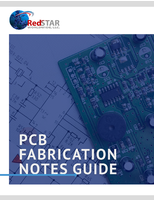NASA awards contracts to 302 small business proposals.
Press Release Summary:
NASA has awarded contracts to 302 proposals that address critical research and technology needs for agency programs and projects. The SBIR program selected 276 proposals for negotiation of phase 1 contracts and the STTR program selected 26 proposals. Research areas among the proposals include simulation of dynamic air corridors, development of LIDAR systems for robotic navigation on the lunar surface, regenerative fuel cells, solar cells, and space communications transmitters.
Original Press Release:
NASA Selects 302 Small Business Research and Technology Projects
WASHINGTON - NASA has awarded contracts to 302 small business proposals that address critical research and technology needs for agency programs and projects. The awards are part of NASA's Small Business Innovation Research Program, known as SBIR, and the Small Business Technology Transfer program, known as STTR.
The SBIR program selected 276 proposals for negotiation of phase 1 contracts, and the STTR program chose 26 proposals for negotiation of phase 1 contract awards. The selected SBIR projects have a total value of approximately $27.6 million. The selected STTR projects have a total value of approximately $2.6 million. The SBIR contracts will be awarded to 205 small, high technology firms in 31 states. The STTR contracts will be awarded to 24 small high technology firms in 14 states. As part of the STTR program, the firms will partner with 22 universities and research institutions in 15 states.
SBIR and STTR are part of the Innovative Partnerships Program Office at NASA Headquarters in Washington, which works with U.S. industry to infuse pioneering technologies into NASA missions and transition them into commercially available products and services.
The SBIR program supports NASA's mission directorates by competitively selecting ventures that address specific technology gaps in mission programs and strives to complement other agency research investments. Results from the program have benefited several NASA efforts, including air traffic control systems, Earth observing spacecraft, the International Space Station and the development of spacecraft for exploring the solar system.
Research topic areas among this group of selected proposals include:
o A simulated test-bed for identifying dynamic air corridors to increase aircraft throughput
o Compact, 3-D scanning Light Detection and Ranging for robotic navigation on the lunar surface, known as LIDAR
o Regenerative fuel cells for use on the lunar surface
o Ultra-high efficiency solar cells designed to operate on spacecraft in extreme environment missions
o High-efficiency transmitters for space communications that provide a significant improvement in its power output capability without an impact on the payload size and power
The SBIR program is a highly competitive, three-phase award system. It provides qualified small businesses - including women-owned and disadvantaged firms - with opportunities to propose unique ideas that meet specific research and development needs of the federal government.
These contract awards are for Phase 1, which is a feasibility study with as much as $100,000 in funding to evaluate the scientific and technical merit of an idea. The SBIR awards may last as long as six months. The STTR awards may last as long as one year. Phase 2 expands on the results on the development of Phase 1; awards are for as much as $600,000 during as long as two years. Phase 3 is for the commercialization of the results of Phase 2 and requires the use of private sector or non-SBIR federal funding.
Contractors submitted 1,500 Phase 1 SBIR proposals and 166 Phase 1 STTR proposals for competitive selection. The criteria used to choose the winning proposals included technical merit and feasibility; experience, qualifications and facilities; effectiveness of the work plan; and commercial potential and feasibility.
NASA's Ames Research Center, Moffett Field, Calif., manages the program for the Innovative Partnership Program office. NASA's 10 field installations manage individual projects.
For a list of selected companies, visit:
http://sbir.nasa.gov
For more information about the Innovative Partnerships Program, visit:
http://www.ipp.nasa.gov
For more information about NASA and agency programs, visit:
http://www.nasa.gov
Michael Mewhinney
Ames Research Center, Moffett Field, Calif.
650-604-3937
michael.mewhinney@nasa.gov
David E. Steitz
Headquarters, Washington
202-358-1730
david.steitz@nasa.gov




